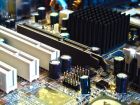Computer Ports
What is a computer port?
We have already touched on computer ports in the input and output section, but I want to dig a little deeper into this topic.
We discussed some of the more common ports in the input and output section, so I want to have a look at some other ports and what connects to them.
The basics.
Also known as PC ports, are there so you can connect some devices to your computer. These devices include external disks, keyboard, mouse, microphone etc.
They are usually located at the back of the PC. This depends on the case and motherboard though. Some cases have ports in the front as well.
IO Ports on motherboard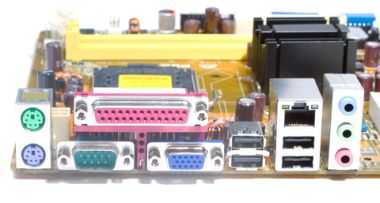
For instance, the audio jacks of the sound chip or sound card are sometimes located in the front of the case. You just need to run a cable from your motherboard to the front of the case.
The cables are usually already connected if you buy the PC new.
Other examples would be USB ports. Some cases come out with USB ports in the front of the case as well.
To place the ports in the front makes a bit more sense to me. If your computer case is placed on the floor under your desk, then it's quite difficult to plug something into the ports if they are at the rear of the PC.
You will need to get down on your knees and try to find the port. Then you have to try and plug the device in. Believe me, this can be quite challenging. So, I like ports in the front.
Laptops and notebooks don't have this problem as the laptop is usually always, I hope, on top of the desk where you work. The ports are easily accessible from any side of the laptop.
What ports do you get?
There are basically 2 categories of ports. You get hardware ports and software ports.
Hardware ports are computer ports that you can see and plug a device into.
Software ports are software based and it's mainly used when two programs want to exchange data between each other.
In this section I will concentrate on the hardware ports.
Let's list some common ports that you would find on a computer.
USB (Serial Universal Bus)
Serial Ports
Parallel Ports
SCSI (Small computer System Interface) Ports
VGA (Video Graphics Array) Ports
Network Ports
FireWire Ports
PS/2 connector Ports
DVI (Digital Visual Interface)
AC input Ports
Audio Ports
Fiber Optic ports or fiber channel ports
As you can see there are a lot of different computer ports that you can connect stuff to a computer.
You also get ports that are on add in cards and breakout boxes.
Breakout boxes are devices that connect to one of your computer ports and then the device itself has ports that you can connect devices to.
An example of this is an external sound card. Sound Blaster produces these. Below is a picture of the Sound Blaster Audigy 2 ZS sound card with the breakout box.
Sound Blaster Audigy 2 ZS 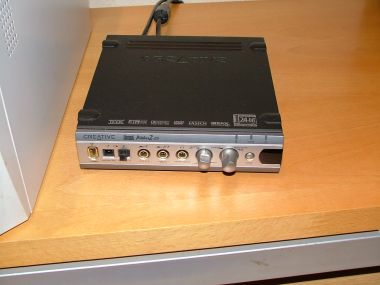
As you can see from the above picture, the breakout box has some ports that you can connect audio devices to. The break out box itself connects to the sound card that's inserted into a slot on the motherboard.
The sound card on the motherboard has ports where the breakout box is connected and you can then connect devices to the breakout box.
Why do I need to know about computer ports?
Remember one thing, if you want to connect a device to your computer, you need to know where to connect it.
Knowing something about the technology will help you in buying the best device for the job.
For instance, USB has lots of standard and versions. Version 1.0 of USB is very slow. You will get 1MB/second transfer speed on a USB 1.0 device. With USB ver 2.0, you should get between 30MB and 40MB/second transfer speed.
So, will you buy a USB ver 1.0 memory stick with this information you just read? No, you wouldn't. Yet, the port looks exactly the same. By just looking at a USB port you cannot tell the difference between the USB versions.
Let's look at some of the ports in detail.
Types of computer ports
USB Ports
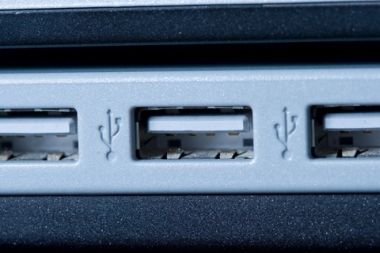
USB or Universal Serial Bus is by far the most popular port for PC's and laptops. It's easy to identify and simple to connect devices to it.
Serial Ports (Circled in red)
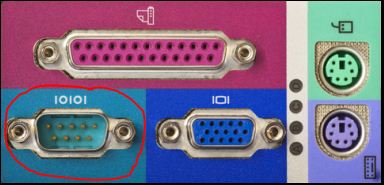
Serial ports are rarely used these days as the USB port is the port of choice to connect devices to. You even get USB to Serial converters.
Parallel Ports (Circled in black)
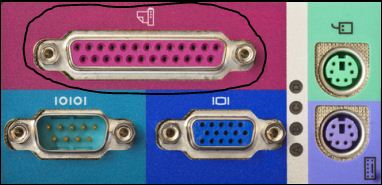
Parallel ports are used to connect printers to your PC. USB and network ports have taken over this port as the port of choise to connect a printer.
SCSI Ports
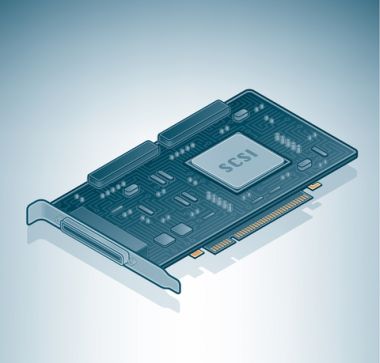
SCSI Ports allow you to connect up to 16 devices on a single port. These devices can be disks, tape drives or scanners. SAS is the new standard and has almost replaced SCSI technology.
VGA Ports
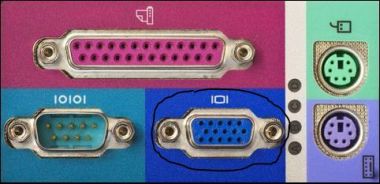
VGA (Video Graphics Array) Ports are ports where you connect your graphics screen. These ports are either on the motherboard or could also be a external card that you slot into the motherboard.
Network Ports
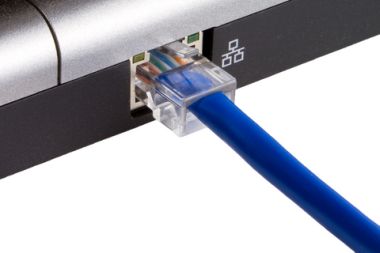
With network ports you can connect to either a local area network or to the internet. These ports come built in on the motherboard or you can buy an add in card with a network port.
Return from Computer Ports to What is My Computer

